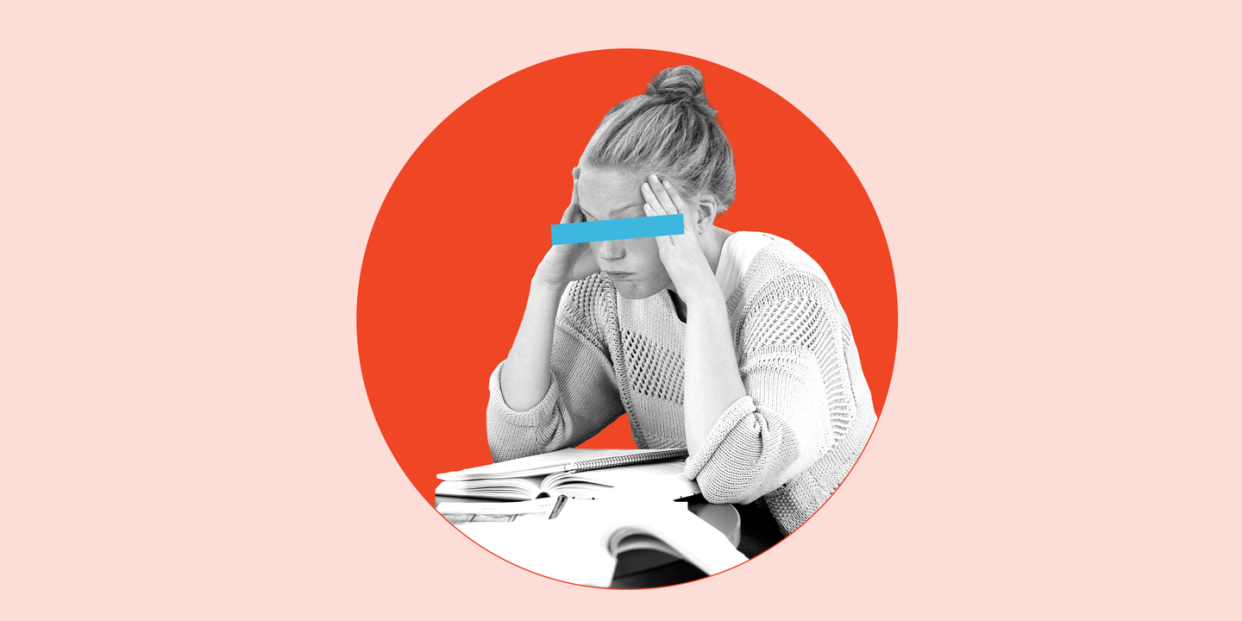Why so many women are only diagnosed with ADHD in adulthood

At 28, Pina landed her dream job as a freelance artist for an animation movie. She had spent five years working for this, so she was determined to do well, but when she sat down to start her work, no matter how hard she tried, she just couldn’t concentrate. “For some reason, I just couldn't get myself to start working. It got so bad that I didn't hand in any work for two weeks,” she says. “I started doubting that I could ever hold down a job and thinking I just wasn't as good an artist as I had thought.”
One night Pina typed ‘I can't start working’ into Google. She came across an article that mentioned ADHD. Pina had suspected she had ADHD in the past but was hesitant to seek diagnosis for fear of being called lazy or accused of trying to make excuses for herself. But, after this late night search she decided to seek a doctor who confirmed her suspicions.
ADHD stands for Attention Deficit Hyperactivity Disorder. It can compromise people’s ability to regulate their attention. According to the NHS, it affects three to four per cent of children and two per cent of adults and the common age for diagnosis is between six and 12, making Pina’s diagnosis at 28 relatively late.
However Pina’s story isn’t uncommon. ADHD has the nickname ‘naughty boy syndrome’ – it’s widely believed to be more common in boys. But that means when girls and women have it, there’s a risk of it going under the radar. “There’s a stereotypical expectation it’s a boy’s disorder,” says Dr Sally Cubin, a psychiatrist from the ADHD Clinic in Oxford. She says that women with ADHD are more likely to be diagnosed much later in life and they’re also more likely to be misdiagnosed with anxiety or depression.
There are a range of reasons for this. Females can often present with ADHD differently to males. “We say women are more likely to show pro-social behaviour while men are more likely to show anti-social behaviour. Women are much more worried about messing up,” Dr Cubin says. “Girls are more likely to compensate for their struggles by relentlessly working extra hours. Their teacher might get a good bit of homework but have no idea how long it took them. This means as a child they get by but often at a huge personal cost of worrying and having to put in tonnes of extra work.”
I can relate to this story myself, I learnt that I may have ADHD when I was sixteen. I had been labelled as a daydreamer for as long as I could remember by my teachers and classmates, but no one seemed to recognise I might have a problem. It was only when I went to a learning difficulties specialist myself because I was struggling to complete my work on time that I learnt about ADHD. Finding out that there might be a reason why I didn’t seem to be able to focus as easily as others was validating, but I wish I had known about it sooner.
“There’s a stereotypical expectation it’s a boy’s disorder”
Pina felt that ADHD had been affecting her since school, where she kept forgetting her books and pencil cases, and would miss sentences out of her essays. “My classmates and teachers assumed I was just not that intelligent,” she says. “It seemed to everyone like I just didn’t care, but that couldn’t have been further from the truth.” Hyperactivity is considered one of the most obvious symptoms of ADHD but Pina didn’t seem hyperactive; instead she was a quiet, cooperative student. “Being loud and direct was more acceptable for the boys in my class, so if I wanted to avoid further rejection or bullying, I quickly learnt that I had to hide this side of me. I think if I had been able to show my excitable and temperamental side, it would have been more obvious that I had ADHD.” Pina was later told by her doctor that she was hyperactive, just in more subtle ways, for instance she shakes her legs, taps her feet, blinks, hums when waiting for the bus, and turns her head frequently.
The symptoms of ADHD can often be confused with depression and anxiety, this is even more likely to be the case in women seeing as women are more often diagnosed with these conditions. Although she’s happy to have found support, Pina wishes she had understood her problems sooner. “I felt a sense of loss after the diagnosis, knowing that if I had been diagnosed much earlier, I wouldn't have struggled as much in college and not blamed anxiety for what I didn't know were ADHD symptoms.”

The confusion and frustration of not knowing why you’re struggling can take its toll on someone’s mental health. “Adults who are diagnosed might have suffered a lot of insults to their self-esteem, such as being criticised at school for not working hard enough or losing jobs, so often it affects how they see themselves,” Dr Cubin says. And this may be the reason that ADHD is often diagnosed alongside other mood disorders such as anxiety and depression, as it exacerbates those issues. “If you have three different psychiatric diagnoses, which a lot of people do: anxiety, depression and substance misuse for example, then you’re ten times more likely to have ADHD,” she says.
Leila, 38, believes that ADHD has affected her self-esteem. “It’s really hard when you feel misunderstood and I would have done anything to be accepted around my peers.” Leila was diagnosed with ADHD last year; it was only after learning that her son had it that she decided to consult a doctor about her own symptoms. She can now see how it might have caused her to ruminate over upsetting thoughts and to feel emotions more intensely in the past. “I didn’t know how to communicate my anger to other people and they would wonder why I was overreacting.” But Leila has become much more comfortable with who she is since her diagnosis. She doesn’t take medication for it, however therapy has helped immensely and she now intends to provide workshops for her colleagues about ADHD in the office.
"If I hadn’t worked with people who knew about ADHD I would have just thought I was distractible and not very smart"
For many women it takes a change in lifestyle which pushes them to near breaking point, before they finally decide to seek help. For Emilina it took single parenthood and a new job. “I was in a quiet office all day for the most part and that, teamed with being a single mum, was when it really got hard for me to manage my life,” she says. Fortunately for Emilina, her colleagues recognised her ADHD symptoms and made her aware of the condition. “I think if I hadn’t worked with people who knew about ADHD I would have just thought I was not very smart and also distractible, I wouldn’t have gone to a doctor and asked to be assessed.” But she doesn’t think she would have got through this difficult period of her life without the help of ADHD medication.
If you suspect you have ADHD as an adult woman, Dr Cubin advises going to a GP with a list of your symptoms. “Almost suggest it to them, because they often won’t think about it,” she says. She feels that medication is the best way to treat ADHD although there are many women who prefer not to rely on drugs. Regardless of how you deal with it, I can vouch for the fact that just knowing you have it and understanding how it affects you can really help. So can teaching others about it. “I think there’s lots that could be done,” Dr Cubin says. “we need to educate teachers, doctors and even psychiatrists and correct this gender bias so that they no longer look at it as a disorder of boys.”
What are the symptoms of ADHD in women?
"Some people have what is often called ADD (attention deficit disorder) and do not have any hyperactive/impulsive symptoms and only have problems with attention and organisation," notes Dr Sally Cubin. Generally, the symptoms can be split into two sections, as follows.
Inattentive symptoms:
short attention span
making careless mistakes
drifting off in conversation – mind wandering
not finishing tasks – getting bored and giving up
disorganised
procrastinates – puts off tasks that are not enjoyable
misplaces or loses things – spends a lot of time looking for things
is easily distracted
is forgetful
Symptoms of hyperactivity-impulsivity:
fidgets or taps with hands or feet, or squirms in seat.
leaves seat – makes excuses to get up and down a lot
feels restless – physically and/or mentally
noisy/heard above the crowd
always on the go/can’t relax
is a chatterbox, interrupts or talks over people
impatient – really hates queueing
impulsive – says or does things without thinking
Other common associated symptoms include "being emotionally over reactive, having a hot temper, and being moody – up and down in mood within one day," says Dr Cubin.
The latest issue of Cosmopolitan UK is out now and you can SUBSCRIBE HERE.
Like this article? Sign up to our newsletter to get more articles like this delivered straight to your inbox.
You Might Also Like


